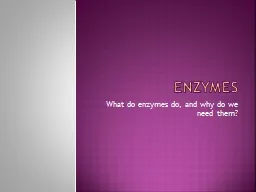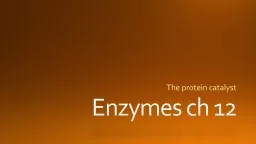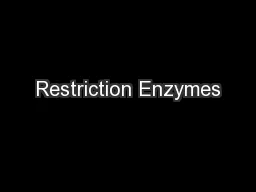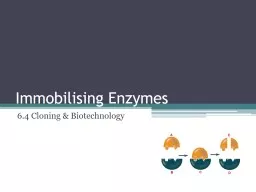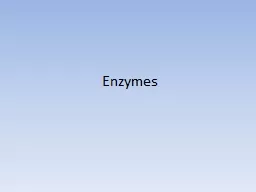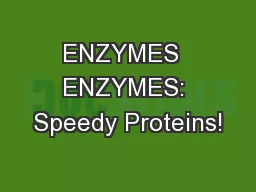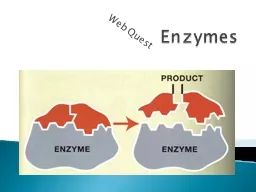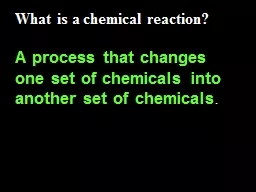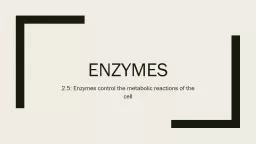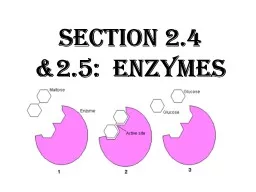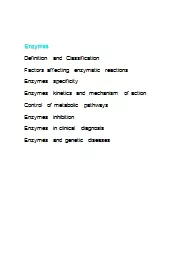PPT-Enzymes What do enzymes do, and why do we need them?
Author : yvonne | Published Date : 2022-06-11
Enzymes Back when we discussed proteins we learned that one critical function of protein was to speed up chemical reactions Enzymes are the proteins that increase
Presentation Embed Code
Download Presentation
Download Presentation The PPT/PDF document "Enzymes What do enzymes do, and why do w..." is the property of its rightful owner. Permission is granted to download and print the materials on this website for personal, non-commercial use only, and to display it on your personal computer provided you do not modify the materials and that you retain all copyright notices contained in the materials. By downloading content from our website, you accept the terms of this agreement.
Enzymes What do enzymes do, and why do we need them?: Transcript
Download Rules Of Document
"Enzymes What do enzymes do, and why do we need them?"The content belongs to its owner. You may download and print it for personal use, without modification, and keep all copyright notices. By downloading, you agree to these terms.
Related Documents

